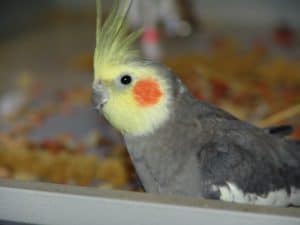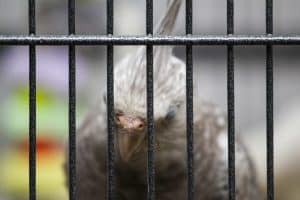Imagine welcoming a cockatiel into your home—those bright eyes, the playful chirps, and yes, even the occasional nips. If you’re wondering how to tame your cockatiel, you’re not alone. Taming these vibrant birds can transform your relationship from mere coexistence to a deep, interactive bond. It’s all about patience, understanding, and the right approach.
Starting with the basics of trust-building to the more intricate steps of training, mastering how to tame your cockatiel doesn’t just improve your pet’s behavior—it enhances the quality of life for both of you. Whether you’re a new owner or looking to refine your approach with an older bird, the journey to a tamed cockatiel is rewarding and filled with learning opportunities. Let’s dive into the essentials of creating a loving, respectful relationship with your feathered friend.
Understanding Cockatiel Behavior
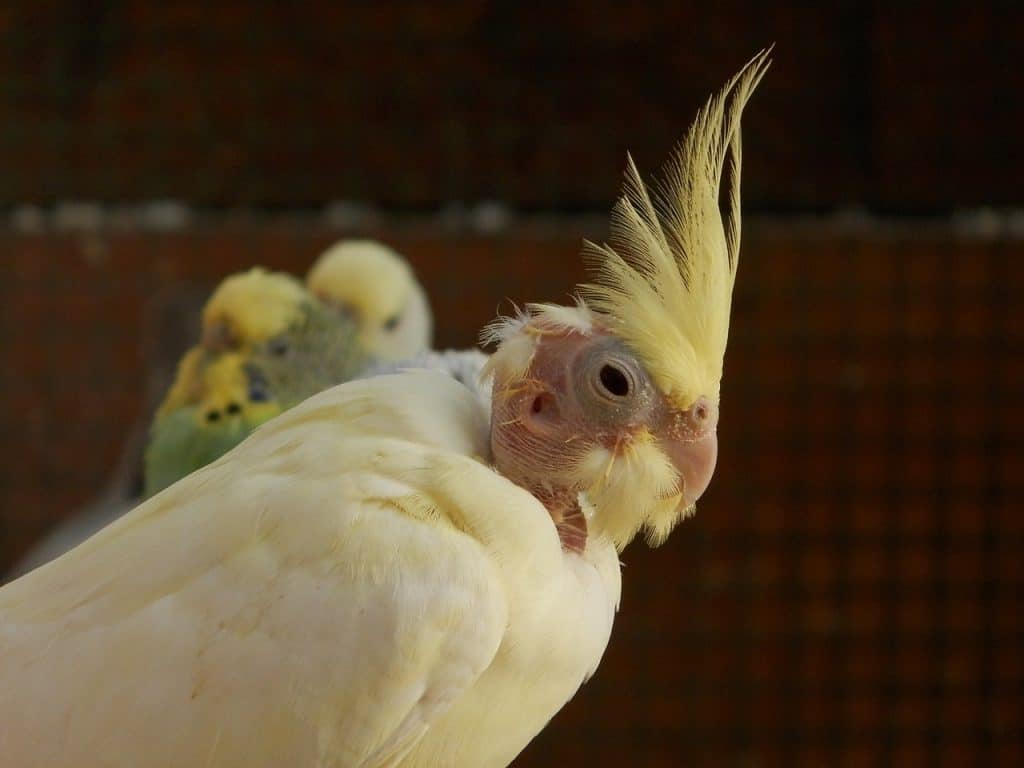
Grasping the nuances of cockatiel behavior plays an essential role in the process of taming your bird. Recognizing these behaviors enhances your ability to interact effectively and build a trusting relationship.
Signs of Fear and Stress
When cockatiels are scared or stressed, they show certain behaviors that are important to recognize for their well-being. These signs include bird hisses, retreating to the opposite side of the cage, and ruffling feathers. A frightened cockatiel might also scream excessively or grind its beak.
If your cockatiel exhibits these behaviors, it indicates discomfort, which can arise from sources like loud noises, sudden movements, or an unfamiliar environment. To address these stressors, speak softly to reassure your bird and minimize disturbances around its cage.
Normal vs. Abnormal Behaviors
Understanding what is normal and what isn’t for cockatiels is key to ensuring they are healthy and content. Normal behaviors include preening, chirping, and playful interactions with toys or their human companions.
On the other hand, abnormal behaviors might include feather plucking, lethargy, or aggression towards humans or other birds. These could be signs of health issues or emotional distress. If you notice any abrupt changes in your cockatiel’s behavior, consult a vet to discuss possible causes and treatments, ensuring your pet’s well-being is maintained.
Establishing Trust with Your Cockatiel
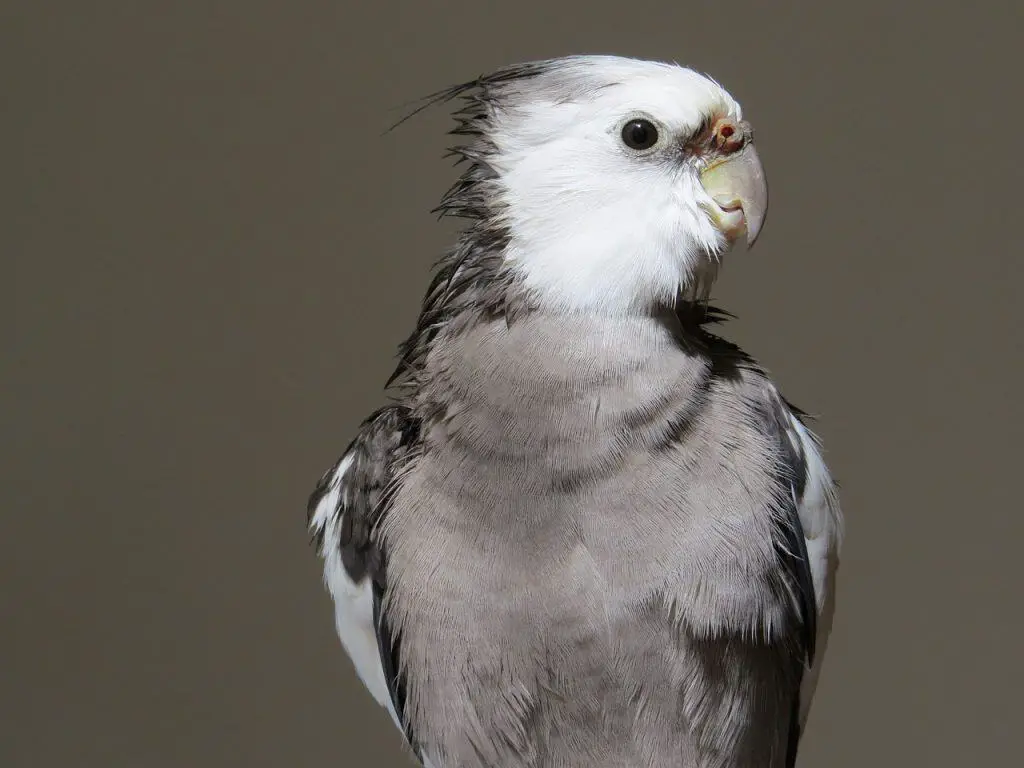
Taming your cockatiel begins with trust, a fundamental aspect that transforms a shy bird into a confident companion. By implementing patience and creating a safe space, you’ll set the stage for a thriving relationship with your pet.
The Importance of Patience
Patience is vital when cultivating trust with your cockatiel. This process might take weeks or even months, depending on the bird’s previous experiences and personality. Start by spending time near their cage daily, allowing your cockatiel to get used to your presence.
Avoid sudden movements or loud noises, as these can cause stress. Gradually, your bird will begin associating you with safety and comfort. Offering treats from your hand can further this association, building a bridge of trust through positive reinforcement.
Creating a Safe Environment
A safe environment is key to making your cockatiel feel secure and more inclined to trust you. Ensure the cage is placed in a quiet corner of your home, away from high traffic areas. The cage should be large enough for your cockatiel to fly and move comfortably, equipped with essentials like perches, a food bowl, and toys.
Keep the cage clean and maintain a regular feeding schedule. Once your cockatiel appears comfortable in its new environment, you can begin training by slightly opening the cage door and speaking softly, encouraging interaction at a pace that’s comfortable for your bird.
- SizeLadder shelf 7.48 x 7.48" / 19 x 19cm.
- Safe Material This bird corner perch is made of natural wood, non-toxic and harmless, pets can chew and bite safely, safely grinding teeth and trim beak and nails naturally, the perch surface polished smooth, will not hurt the pet feet.
- FeatureThe smooth and polished bird stand is made of solid materials, and the metal nut is more stable, which is convenient to install in any corner of the cage and increases the pet's activity space.
- Multi-FunctionThe playground for birds and parrots, the platform for resting, and the smooth surface protect the feet, making it a stable and safe landing site.
- Best GiftThis bird perch provides your pet with a nice and cozy place for playing, exercise and rest, relieves boredom and increases activity level, this is the perfect gift for pets.
Hands-On Taming Techniques
Building on the trust and understanding you’ve developed with your cockatiel, it’s time to introduce hands-on techniques to further tame your bird. These methods encourage more direct interaction, fostering a deeper bond between you and your pet.
Step-by-Step Approach to Hand Taming
Start by placing your hand near the cage and gradually moving it closer to your cockatiel each day. Allow your bird to get used to the presence of your hand to minimize fear or aggression. Once your cockatiel seems comfortable, introduce treats such as millet spray or a favorite treat by holding them with your fingers, just outside the open cage door. If your bird steps forward to eat, it’s a sign of trust; if it retreats, give it more time to adjust.
Next, encourage your cockatiel to perch on your finger by gently pressing your index finger against its lower chest right above the legs. Combine this with the command “step up.” When your cockatiel complies, reward it immediately with a treat and verbal praise. Practice this daily, gradually increasing the time your bird spends perched on your finger inside then outside of the cage.
Handling and Interaction Best Practices
Always approach your cockatiel calmly and speak softly to maintain a soothing environment. Avoid sudden movements that could startle your bird. When handling your cockatiel, support its feet fully with your fingers, ensuring it feels secure. Over multiple sessions, you can begin to gently pet your cockatiel’s head and back, which can help in strengthening your bond.
Timing is crucial for interaction. Engage with your cockatiel during quiet times of the day when it’s most receptive. Use positive reinforcement consistently; rewarding good behavior with yummy treats and affection will help your cockatiel associate human interaction with positive experiences, leading to more successful taming sessions. Remember, patience and consistent gentle handling are key in successful cockatiel taming.
Using Positive Reinforcement Effectively
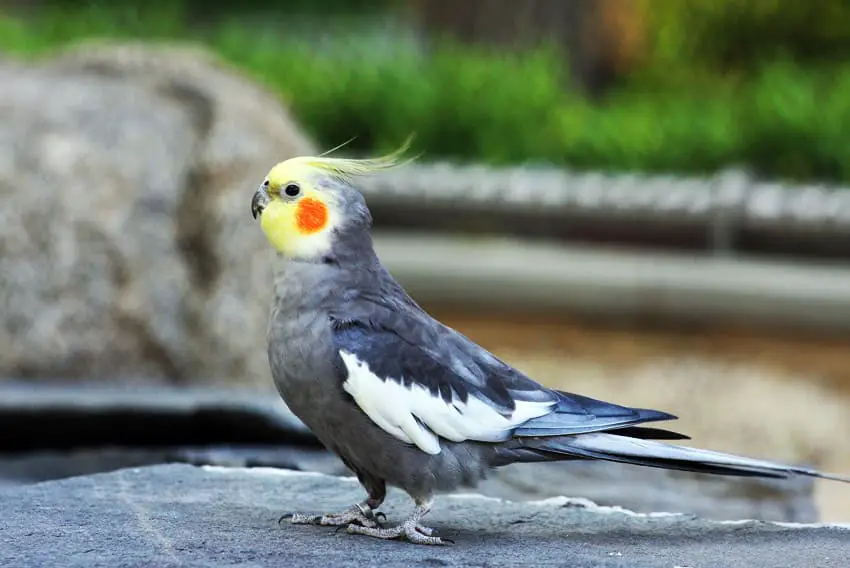
Using positive reinforcement effectively enhances your cockatiel’s taming process by encouraging good behavior through rewards. It’s pivotal in establishing trust and a strong bond between you and your bird.
Choosing the Right Rewards
Choosing appropriate rewards is crucial when training your cockatiel. Cockatiels have a preference for various treats, but millet spray often tops the list as a favored treat. Offer millet as a reward directly from your hand to strengthen your bond. This direct interaction not only makes the treat more appealing but also associates your presence with something pleasurable.
Besides millet, you might try offering bits of fruits or vegetables that your bird enjoys. Notice your cockatiel’s reaction to different treats to identify what motivates them best. If your cockatiel starts eating the treat from your hand, it’s a sign that they feel comfortable and view you as a source of good things.
Consistency in Training
Maintaining consistency in training sessions is key to successfully taming your cockatiel. Set a regular schedule for training; this consistency helps your bird learn what to expect and when to expect it, thereby reducing stress and enhancing receptiveness to training. Keep sessions short but regular, preferably twice a day for about five to ten minutes each.
Using the same commands and gestures each time helps reinforce learning. For instance, if you’re using the “step up” command during training, consistently use this command only when you want your bird to step onto your finger. This repetition makes it easier for your cockatiel to understand and follow your instructions, accelerating the taming process.
Advanced Taming Tips
Building on the fundamentals of taming your cockatiel, advanced techniques refine your approach and enhance your cockatiel’s responsiveness. These methods foster greater trust and make the taming journey enjoyable and fruitful for both you and your bird.
Addressing Biting and Aggression
When your cockatiel shows aggression by biting, staying calm and consistent in your reaction is crucial. First, ensure your bird feels safe and check for environmental stressors, like loud noises or sudden changes, that might provoke biting. Introduce a firm “no” or gently blow on your bird’s beak when it bites.
Immediate reactions help your cockatiel associate the behavior with your disapproval, without causing fear. Additionally, focus on rewarding good behavior rather than punishing the bad. If your cockatiel remains calm and doesn’t bite, offering a favorite treat, such as millet spray, reinforces positive interactions.
Training Your Cockatiel to Perform Tricks
Moving beyond basic commands, training your cockatiel to perform tricks can strengthen your bond and provide mental stimulation. Start with simple tricks like ‘step-up’ training, where your bird learns to step onto your finger on command. Using clicker training, a method that marks good behavior with a click sound before giving a treat, can be very effective.
Begin by rewarding your cockatiel every time it achieves a small step towards the final trick, like touching a target stick. Maintain short, positive sessions and gradually increase the complexity of the tricks as your bird learns. Remember, the key to success lies in patience, repetition, and positive reinforcement.
Tips for New Bird Owners
If you’re new to the world of bird ownership, taming a young bird, especially a cockatiel, can feel overwhelming. However, with the right approach and a bit of patience, you can create a positive and rewarding experience for both you and your feathered companion.
Choosing the Right Time to Start
Starting the taming process as soon as you bring your new bird home is crucial. Young birds, like fledgling cockatiels, are generally more adaptable and can bond with their owners more quickly. However, it’s important to give your new bird a few days to adjust to its surroundings before beginning any training. During this time, keep interactions gentle and minimal to avoid overwhelming your pet.
Socializing Your New Bird
Socialization is key to taming cockatiels, whether they’re young or older, previously untamed cockatiels. Spend time near your bird’s cage, talking softly to help it get accustomed to your presence. Gradually, your cockatiel will start associating your voice and presence with safety.
Handling Bird Pecks
One common issue bird owners face is handling bird pecks. When a cockatiel pecks, it might be trying to communicate discomfort or assert boundaries. Instead of reacting negatively, try to understand the cause of the pecking. It could be due to fear, overstimulation, or simply exploring its environment.
Creating Positive Experiences
To tame cockatiels effectively, focus on creating positive experiences. Use treats and praise to reward your bird for calm and cooperative behavior. Over time, these positive interactions will help build trust and reduce instances of pecking.
Taming Older or Untamed Cockatiels
If you’ve adopted an older or previously untamed cockatiel, patience is even more critical. These birds might have ingrained behaviors and fears that require more time and gentle handling to overcome. Start with the same trust-building steps: spending time near the cage, offering treats, and speaking softly. Gradually, as your bird starts to trust you, you can begin more hands-on taming techniques.
Wrapping Up: How to tame your cockatiel
Taming your cockatiel is a rewarding journey that enhances the bond between you and your feathered friend. By implementing the strategies discussed, like using positive reinforcement and maintaining a consistent training routine, you’ll see significant progress in your cockatiel’s behavior.
Remember, the key to success lies in your patience and commitment to understanding your bird’s needs and responses. As you continue to apply these techniques, you’ll not only foster a deeper connection but also enjoy the delightful experience of having a well-trained cockatiel. Keep up the great work and cherish each step of this fulfilling adventure.
Other suggested articles:
How Long Does It Take for Clipped Wings to Grow Back?
What tricks can you teach your cockatiel?
- How Can Your Other Pets Be Harmful To Your Cockatiel
- How Cockatiels Show Affection
- How Do Children Make Cockatiels As Pets
- How Do Cockatiels See
- How Do Cockatiels Sleep
- How Do Fumes Affect Your Cockatiel
- How Do You Care For Your Cockatiel Everyday
- How Do You Choose A Cage For Your Cockatiel
- How Do You Medicate Cockatiels
- How Do You Provide Your Cockatiel With Water
- How Do You Select Your Cockatiel
- How Do You Tame A Cockatiel
- How Does A Cockatiel Got Her Name
- How Far Can A Cockatiel Fly
- How Far Can A Cockatiel See
- How Fast Can Cockatiels Fly
- How Good Is A Cockatiels Memory
- How Long Can A Cockatiel Go Without Food
- How Long Can Cockatiels Go Without Water
- How Long Do Cockatiels Actually Live For In Captivity
- How Long Do Cockatiels Live In Captivity
- How Long Does It Take For Clipped Wings To Grow Back
- How Long Does It Take For Cockatiel Tail Feathers To Grow Back
- How Long Should A Cockatiel Be Out Of Its Cage
- How Often Do Cockatiels Lay Eggs
- How Often Do Cockatiels Poop
- How Often Should A Cockatiel Go To The Vet
- How Should I Set Up My Cockatiels Cage
- How To Bathe Your Cockatiel
- How To Bird Proof A Room
- How To Bond Two Cockatiels
- How To Bond With A Scared Cockatiel
- How To Build Trust With A New Cockatiel
- How To Calm A Stressed Cockatiel
- How To Care For Your Cockatiels Health
- How To Care For Your Cockatiels Nails
- How To Catch A Cockatiel
- How To Clean Cockatiel Nose
- How To Clip A Cockatiels Nails
- How To Discipline A Cockatiel
- How To Find A Cockatiel That Flew Away
- How To Get A Cockatiel Back Into Its Cage
- How To Get A Cockatiel To Go On Your Hand
- How To Get A Cockatiel To Like You
- How To Get A Cockatiel To Sit On Your Finger
- How To Give Your Cockatiel Exercise
- How To Grow Millet For Cockatiels
- How To Hold A Cockatiel
- How To Introduce A New Cockatiel To Another
- How To Keep A Cockatiel Quiet
- How To Keep A Cockatiel Warm 10 Tips And Tricks
- How To Maintain A Clean Cockatiel Cage
- How To Make Your New Cockatiel Feel At Home
- How To Manage Multiple Cockatiels In One Household
- How To Monitor Your Cockatiels Health
- How To Prepare Your Cockatiel For Travel
- How To Prevent Your Cockatiel From Becoming Stressed
- How To Recognize And Treat Cockatiel Anxiety
- How To Take Care Of An Older Cockatiel
- How To Tame A Cockatiel That Bites
- How To Tame Your Cockatiel
- How To Teach A Cockatiel To Talk
- How To Tell If A Cockatiel Is In Pain
- How To Tell The Age Of A Cockatiel
- How To Toilet Train Your Cockatiel
- How To Train A Cockatiel To Fly To You 8 Steps
- How To Train A Cockatiel To Poop In One Place
- How To Train Naughty Cockatiels
- How To Transition Your Cockatiel To A New Cage
- How To Transport A Cockatiel To The Vet
- How To Trim A Cockatiels Beak
- How To Trim Your Cockatiels Wings



